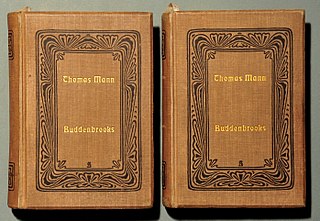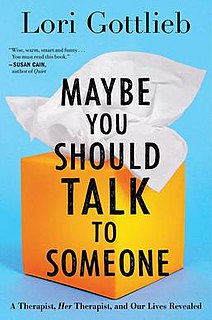
Arthur Schopenhauer was a German philosopher. He is best known for his 1818 work The World as Will and Representation, which characterizes the phenomenal world as the product of a blind noumenal will. Building on the transcendental idealism of Immanuel Kant (1724-1804), Schopenhauer developed an atheistic metaphysical and ethical system that rejected the contemporaneous ideas of German idealism. He was among the first thinkers in Western philosophy to share and affirm significant tenets of Indian philosophy, such as asceticism, denial of the self, and the notion of the world-as-appearance. His work has been described as an exemplary manifestation of philosophical pessimism.
Pessimism is a negative mental attitude in which an undesirable outcome is anticipated from a given situation. Pessimists tend to focus on the negatives of life in general. A common question asked to test for pessimism is "Is the glass half empty or half full?"; in this situation, a pessimist is said to see the glass as half empty, while an optimist is said to see the glass as half full. Throughout history, the pessimistic disposition has had effects on all major areas of thinking.

Psychotherapy is the use of psychological methods, particularly when based on regular personal interaction, to help a person change behavior, increase happiness, and overcome problems. Psychotherapy aims to improve an individual's well-being and mental health, to resolve or mitigate troublesome behaviors, beliefs, compulsions, thoughts, or emotions, and to improve relationships and social skills. Numerous types of psychotherapy have been designed either for individual adults, families, or children and adolescents. Certain types of psychotherapy are considered evidence-based for treating some diagnosed mental disorders; other types have been criticized as pseudoscience.
Group psychotherapy or group therapy is a form of psychotherapy in which one or more therapists treat a small group of clients together as a group. The term can legitimately refer to any form of psychotherapy when delivered in a group format, including art therapy, cognitive behavioral therapy or interpersonal therapy, but it is usually applied to psychodynamic group therapy where the group context and group process is explicitly utilized as a mechanism of change by developing, exploring and examining interpersonal relationships within the group.
Will, within philosophy, is a faculty of the mind. Will is important as one of the parts of the mind, along with reason and understanding. It is considered central to the field of ethics because of its role in enabling deliberate action.
In existential psychotherapy, responsibility assumption is the doctrine, practiced by therapists such as Irvin D. Yalom where an individual taking responsibility for the events and circumstances in their lives is seen as a necessary basis for their making any genuine change.

Rollo Reece May was an American existential psychologist and author of the influential book Love and Will (1969). He is often associated with humanistic psychology and existentialist philosophy, and alongside Viktor Frankl, was a major proponent of existential psychotherapy. The philosopher and theologian Paul Tillich was a close friend who had a significant influence on his work.

Buddenbrooks is a 1901 novel by Thomas Mann, chronicling the decline of a wealthy north German merchant family over the course of four generations, incidentally portraying the manner of life and mores of the Hanseatic bourgeoisie in the years from 1835 to 1877. Mann drew deeply from the history of his own family, the Mann family of Lübeck, and their milieu.

Arthur Schopenhauer's aesthetics result from his philosophical doctrine of the primacy of the metaphysical Will as the Kantian thing-in-itself, the ground of life and all being. In his chief work, The World as Will and Representation, Schopenhauer thought that if consciousness or attention is fully engrossed, absorbed, or occupied with the world as painless representations or images, then there is no consciousness of the world as painful willing. Aesthetic contemplation of a work of art provides just such a state—a temporary liberation from the suffering that results from enslavement to the will [need, craving, urge, striving] by becoming a will-less spectator of "the world as representation" [mental image or idea]. Art, according to Schopenhauer, also provides essential knowledge of the world's objects in a way that is more profound than science or everyday experience.
Irrationality is cognition, thinking, talking, or acting without inclusion of rationality. It is more specifically described as an action or opinion given through inadequate use of reason, or through emotional distress or cognitive deficiency. The term is used, usually pejoratively, to describe thinking and actions that are, or appear to be, less useful, or more illogical than other more rational alternatives.

The World as Will and Representation, sometimes translated as The World as Will and Idea, is the central work of the German philosopher Arthur Schopenhauer. The first edition was published in late 1818, with the date 1819 on the title-page. A second, two-volume edition appeared in 1844: volume one was an edited version of the 1818 edition, while volume two consisted of commentary on the ideas expounded in volume one. A third expanded edition was published in 1859, the year prior to Schopenhauer's death. In 1948, an abridged version was edited by Thomas Mann.
Existential psychotherapy is a form of psychotherapy based on the model of human nature and experience developed by the existential tradition of European philosophy. It focuses on concepts that are universally applicable to human existence including death, freedom, responsibility, and the meaning of life. Instead of regarding human experiences such as anxiety, alienation and depression as implying the presence of mental illness, existential psychotherapy sees these experiences as natural stages in a normal process of human development and maturation. In facilitating this process of development and maturation, existential psychotherapy involves a philosophical exploration of an individual's experiences stressing the individual's freedom and responsibility to facilitate a higher degree of meaning and well-being in their life.

Crazy Therapies: What Are They? Do They Work? is a book by the psychologist Margaret Singer and the sociologist Janja Lalich. It was published by Jossey-Bass in 1996.

Irvin David Yalom is an American existential psychiatrist who is emeritus professor of psychiatry at Stanford University, as well as author of both fiction and nonfiction.

Parerga and Paralipomena is a collection of philosophical reflections by Arthur Schopenhauer published in 1851. The selection was compiled not as a summation of or introduction to Schopenhauer's philosophy, but as augmentary readings for those who had already embraced it, although the author maintained it would be comprehensible and of interest to the uninitiated nevertheless. The collection is divided into two volumes, covering first the parerga and thereafter the paralipomena to that philosophy. The parerga are six extended essays intended as supplementary to the author's thought. The paralipomena, shorter elaborations divided by topic into thirty-one subheadings, cover material hitherto unaddressed by the philosopher but deemed by him to be complementary to the parerga.

When Nietzsche Wept is a 1992 novel by Irvin D. Yalom, Emeritus Professor of Psychiatry at Stanford University, an existentialist, and psychotherapist. The book takes place mostly in Vienna, Austria, in the year 1882, and relates a fictional meeting between the doctor Josef Breuer and the German philosopher Friedrich Nietzsche. The novel is a review of the history of philosophy and psychoanalysis and some of the main personalities of the last decades of the 19th century, and revolves around the topic of "limerence".

Existential Psychotherapy is a book about existential psychotherapy by the American psychiatrist Irvin D. Yalom, in which the author, addressing clinical practitioners, offers a brief and pragmatic introduction to European existential philosophy, as well as to existential approaches to psychotherapy. He presents his four ultimate concerns of life—death, freedom, isolation, and meaninglessness—and discusses developmental changes, psychopathology and psychotherapeutic strategies with regard to these four concerns.
Leslie Hillel Farber was an American author, psychiatrist, director of therapy at Austen Riggs Center in Stockbridge, Massachusetts, chairman of the faculty of the Washington School of Psychiatry, and vice president of the William Alanson White Psychiatric Foundation.

Yalom's Cure is a 2014 documentary film about the life and work of American psychiatrist and bestseller author Irvin D. Yalom by Swiss director and writer Sabine Gisiger. Yalom invites viewers to think about themselves and their existence.

Maybe You Should Talk to Someone: A Therapist, Her Therapist, and Our Lives Revealed is a book by Lori Gottlieb, published in 2019. It is a memoir where Gottlieb portrays a difficult time in her professional and personal life. The dual nature of the book enables Gottlieb to show her world as both a therapist and someone receiving therapy. Gottlieb explores five patients, including herself, and their different scenarios and viewpoints on life.












